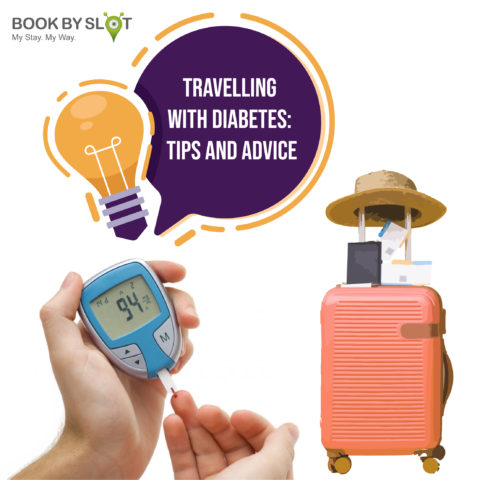
The number of people with diabetes has risen from 108 million in 1980 to 422 million in 2014. The global prevalence of diabetes among adults over 18 years of age has risen from 4.7% in 1980 to 8.5% in 2014. Diabetes prevalence has been rising more rapidly in middle- and low-income countries. The trend does not make for positive news.
Among the various problems that diabetics face, travel is definitely one of them. It is incredibly hard to monitor your diet, especially when you are travelling somewhere. There is also the added hassle of having to take medication and testing equipment. Travelling to new places gets you out of your routine—that’s a big part of the fun. But delayed meals, unfamiliar food, being more active than usual, and different time zones can all disrupt diabetes management. However, it is important to note that with proper and smart planning, there is almost nothing that you cannot do while on a trip.
This article will give you a lot of insight as to what precautions you have to take while travelling and also the kind of places that you can visit. Enjoy your vacation!
Pre-departure- Before a long trip, have a medical exam to make sure your diabetes is in good control. Schedule the exam with enough time to work on your control before you depart. Get immunization shots before you leave, if necessary. Ask your doctor how your planned activities could affect your diabetes and what to do about it.
Get a letter and a prescription. The letter should explain what you need to do for your diabetes, such as take diabetes pills or insulin shots. It should list insulin, syringes, and any other medications or devices you use. The letter should also list any allergies you have or any foods or medications to which you are sensitive.
The prescription should be for insulin or diabetes pills. Prescription laws may be very different in other countries. If you’re going out of the country, do some research about the laws where you’ll be going.
Packing- Put your diabetes supplies in a carry-on bag (insulin could get too cold in your checked luggage). Think about bringing a smaller bag to have at your seat for insulin, glucose tablets, and snacks. Pack twice as much medicine as you think you’ll need. Have a well-wrapped, air-tight snack pack of crackers or cheese, peanut butter, fruit, a juice box, and some form of sugar (hard candy or glucose tablets) to treat low blood glucose
Travel- When you fly, you can request a special meal low in sugar, fat, or cholesterol. Make your request at least two days before the flight.
If you take insulin, wait until your food is about to arrive. Otherwise, a delay in the meal could lead to low blood glucose. To be safe, always carry some food with you. If your meal is delayed or an order is mixed up, you won’t be stuck with an empty stomach.
If on a road trip, stop and get out of the car or walk up and down the aisle of the plane or train every hour or two to prevent blood clots (people with diabetes are at higher risk).
Post-arrival- You will need a few days to adjust because your blood sugar might be out of the targeted range. If your vacation is happening somewhere mostly outdoors, don’t overdo physical activity during the heat of the day. Avoid getting a sunburn and don’t go barefoot, not even on the beach. Check your feet every day. You should look for blisters, cuts, redness, swelling, and scratches. Get medical care at the first sign of infection or inflammation. Bring wet wipes so you can clean your hands before you check your blood sugar.
Places that you can be visiting-
Leave a Reply